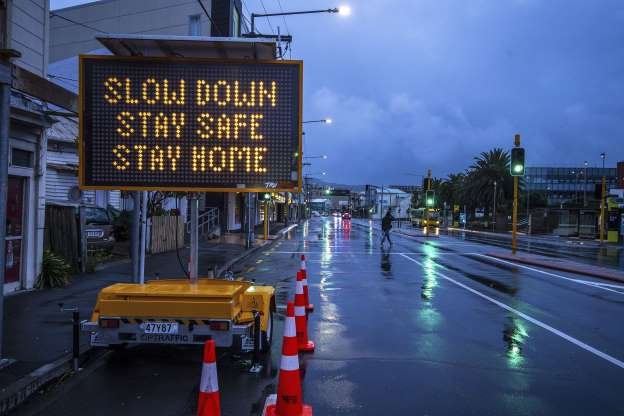New Zealand isn’t just flattening the curve. It’s squashing it.
HAVELOCK NORTH, New Zealand —It has been less than two weeks since New Zealand imposed a coronavirus lockdown so strict that swimming at the beach and hunting in bushland were banned. They’re not essential activities, plus we have been told not to do anything that could divert emergency services’ resources.
People have been walking and biking strictly in their neighborhoods, lining up six feet apart outside grocery stores while waiting to go one-in-one-out, and joining swaths of the world in discovering the vagaries of home schooling.
It took only 10 days for signs that the approach here — “elimination†rather than the “containment†goal of the United States and other Western countries — is working.
The number of new cases has fallen for two consecutive days, despite a huge increase in testing, with 54 confirmed or probable cases reported Tuesday. That means the number of people who have recovered, 65, exceeds the number of daily infections.
“The signs are promising,†Ashley Bloomfield, New Zealand’s director general of health, said Tuesday.
The speedy results have led to calls to ease the lockdown, even a little, for the four-day Easter holiday, especially as summer lingers on.
But Prime Minister Jacinda Ardern is adamant that New Zealand will complete four weeks of lockdown — two full 14-day incubation cycles — before letting up. She has, however, given the Easter Bunny special dispensation to work this weekend.
How has New Zealand, a country I still call home after 20 years abroad, controlled its outbreak so quickly?
When I arrived here a month ago, traveling from the epicenter of China via the hot spot of South Korea, I was shocked that officials did not take my temperature at the airport. I was told simply to self-isolate for 14 days (I did).
But with the coronavirus tearing through Italy and spreading in the United States, this heavily tourism-reliant country — it gets about 4 million international visitors a year, almost as many as its total population — did the previously unthinkable: It shut its borders to foreigners on March 19.
Two days later, Ardern delivered a televised address from her office — the first time since 1982 that an Oval Office-style speech had been given — announcing a coronavirus response alert plan involving four stages, with a full lockdown being Level 4.
A group of influential leaders got on the phone with her the following day to urge moving to Level 4.
“We were hugely worried about what was happening in Italy and Spain,†said one of them, Stephen Tindall, founder of the Warehouse, New Zealand’s largest retailer.
“If we didn’t shut down quickly enough, the pain was going to go on for a very long time,†he said in a phone interview. “It’s inevitable that we will have to shut down anyway, so we would rather it be sharp and short.â€
Comments
There are 0 comments on this post





